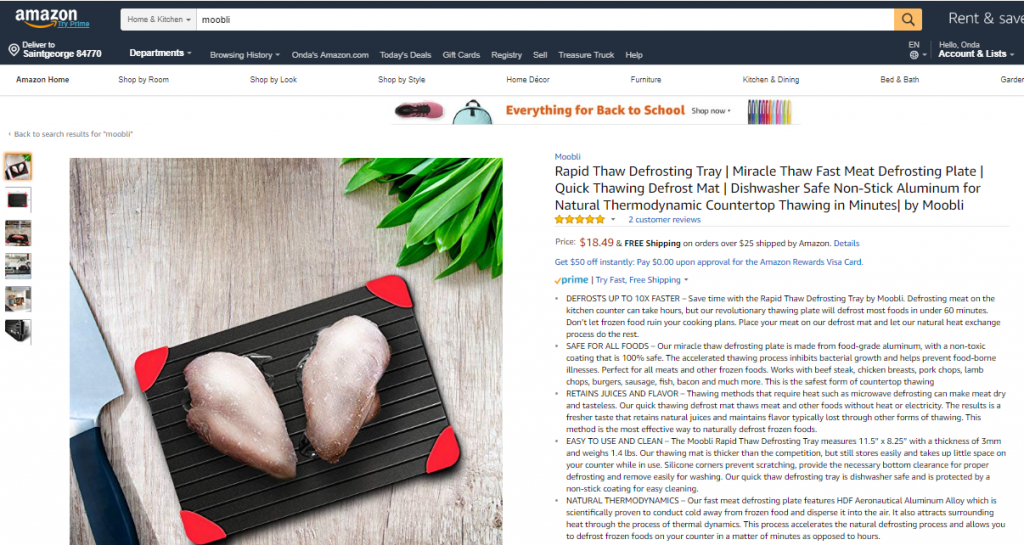With Amazon listing optimization, it’s a jungle out there (pun intended). As the number of sellers continues to increase exponentially, there is simply not enough room for low quality listings. Amazon is working hard to make sure poor quality listings are buried deep where most buyers won’t find them.
Occasionally, poor quality listings will still find their way to the top of search results, but Amazon is not the wild-wild-west that it used to be. Today, Amazon will suppress, or simply unpublish listings that don’t meet certain basic criteria.
So, how do you optimize your listings for search and conversion? First, you must understand and follow Amazon’s style guides . Second, you must understand the importance of keywords and how to use them. Finally, you need to include images and sales copy that drive shoppers to buy.

The ultimate goal of any listing optimization is to sell product. This is accomplished by showing up in search results, getting buyers to click on the search result, and by convincing buyers to click the add-to-cart button and buy.
First Area of Focus – Listing Guidelines
Amazon is policing the content of product titles and bullets now more than ever before. If the title does not meet the style guidelines, you risk the possibility that your listing will not get published. This is particularly true if your title references a trademark protected brand for which you do not have the rights (i.e. you sell Apple iPhone accessories and your title contains an improperly referenced “iPhone” keyword).
Improper verbiage in your title and bullets can also lead to potential suspension of Sponsored Ad Campaigns. At the very least, an inadequate title, or your missing bullet points could lead to a “suppressed” listing, which simply means the listing is published but is not visible in search. Bottom line, make sure you read and understand the style guide before writing your listing title, bullets and other details.
Second Area of Focus – Keywords
We could devote an entire book to the do’s and don’ts of proper keyword research and placement. For the purpose of this article we will focus more on keyword theory and placement.
Keywords are how your listing shows up in search results and gets found by buyers. Proper use of keywords for search visibility is also known as Search Engine Optimization (SEO). There is more to Amazon SEO than just stuffing a lot of keywords into your title and bullets.
While the practice of stuffing as many related keywords as possible might seem like a good idea, it can actually be quite detrimental. Amazon will penalize a listing if it shows up too often for a particular search term without any sales. Since Amazon is a buyer’s search engine, products that don’t get bought, don’t show up.
Make sure your keywords are highly relevant, not just related. Make sure terms are used in order of relevance, first in your title, then in your bullets, next your description, and finally the backend. While the rules for Google search are different, the latest revisions to Amazon’s keyword guidelines suggest that there is no need to repeat keywords throughout your title, bullets and backend. You only need to use a keyword once.
Final Area of Focus – Images and Sales Copy
The ultimate goal of any listing optimization is to sell product. This is accomplished by showing up in search results, getting buyers to click on the search result, and by convincing buyers to click the add-to-cart button and buy.
Keywords play the biggest role in getting the listing to show up in search results. After that, your title and main image become the most important factor in getting the buyer to click-through. You only have a split second as the buyer scrolls past your listing to catch their attention and get them to click. Your title should clearly explain what the product is and what it does. The main image should visually appealing and support the title.
Once the buyer has clicked through to your listing, the bullets and description must be able to explain exactly what the product does and why the buyer should buy it. Supporting product images should be part of this story as well.
Each bullet should be focused on a single feature or benefit, with a short, bolded selling point at the beginning of the bullet, followed by as much explanation as will fit in the allotted character limit for the given category. Be clear and concise.
Images should tell a story. Ideally you will have 4-5 images of the product itself, including infographics to highlight and explain features and benefits. , followed by 1-2 lifestyle images. Images should be visually appealing and should invite the buyer to relate to the product and want to buy it.
Focus on these three things and you will create a listing that is better positioned for success.